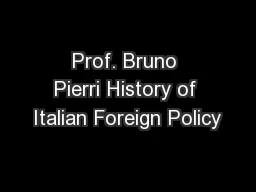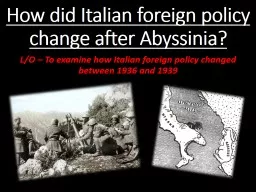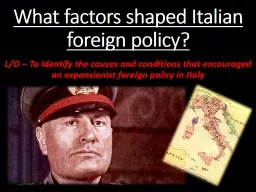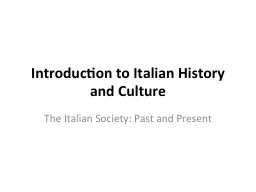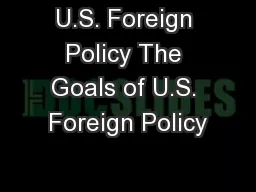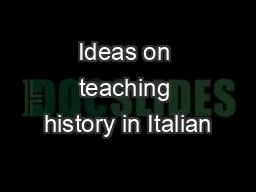PPT-Prof. Bruno Pierri History of Italian Foreign Policy
Author : myesha-ticknor | Published Date : 2018-03-15
Italian Military Policy A Historiographical Analysis 18601960 February 3th 2016 PostUnitarian Italy Special relationship of King with Army Myth of Garibaldi By
Presentation Embed Code
Download Presentation
Download Presentation The PPT/PDF document "Prof. Bruno Pierri History of Italian Fo..." is the property of its rightful owner. Permission is granted to download and print the materials on this website for personal, non-commercial use only, and to display it on your personal computer provided you do not modify the materials and that you retain all copyright notices contained in the materials. By downloading content from our website, you accept the terms of this agreement.
Prof. Bruno Pierri History of Italian Foreign Policy: Transcript
Download Rules Of Document
"Prof. Bruno Pierri History of Italian Foreign Policy"The content belongs to its owner. You may download and print it for personal use, without modification, and keep all copyright notices. By downloading, you agree to these terms.
Related Documents

